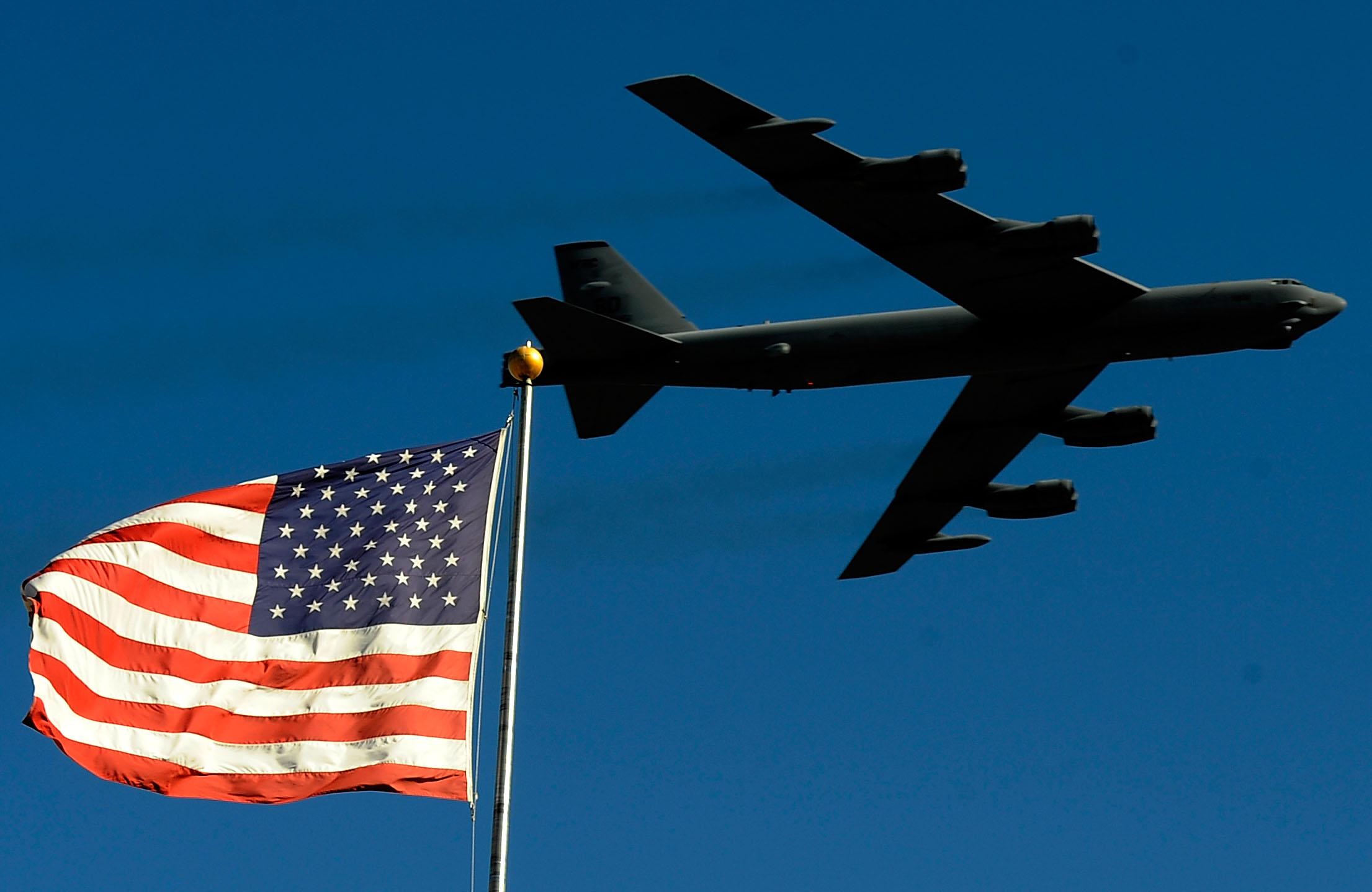US B-52 nuclear bomber flies over South Korea in show of force after North Korea bomb test
A US Admiral called the flyover a 'demonstration of the ironclad US commitment to our allies in South Korea'

An imposing American B-52 bomber flew over South Korea on Sunday, in a show of force following North Korea's claimed successful test of a hydrogen bomb.
The long-range bomber, which is capable of carrying nuclear weapons and has served in a number of conflicts since its introduction in 1955, was joined by South Korean F-15 and American F-16 fighters as it made its flight over Osan Air Force Base, which is around 100 miles away from the border with North Korea.
The flyover was designed to be seen as a threat by North Korea's government, who name the USA as their country's greatest enemy.
North Korea says its own pursuit of atomic weapons is to discourage what it sees as nuclear-backed moves by the United States to topple its authoritarian government.
After North Korea's last nuclear test in 2013, the US also sent its most powerful warplanes to take part in drills, in a similar display of military might.
After its South Korean flyover, the American bomber returned to its base on the Pacific island of Guam, around 2,000 miles away.
In a statement, Admiral Harry B Harris Jr., commander of the US Pacific Command, said the flyover was a "demonstration of the ironclad US commitment to our allies in South Korea, in Japan, and to the defence of the American homeland."
He added: "North Korea's nuclear test is in blatant violation of its international obligations."
The nuclear test, announced on 6 January, was called a "world-startling event" in a government statement, which also described the US as a "gang of cruel robbers" and a pack of "ferocious wolves."
International observers and experts said seismic data showed that a large explosion certainly took place on the day of the test, but that it fell well short of the kind of yield expected from a genuine hydrogen bomb, the most powerful kind of atomic weapon.
Join our commenting forum
Join thought-provoking conversations, follow other Independent readers and see their replies
Comments
Bookmark popover
Removed from bookmarks